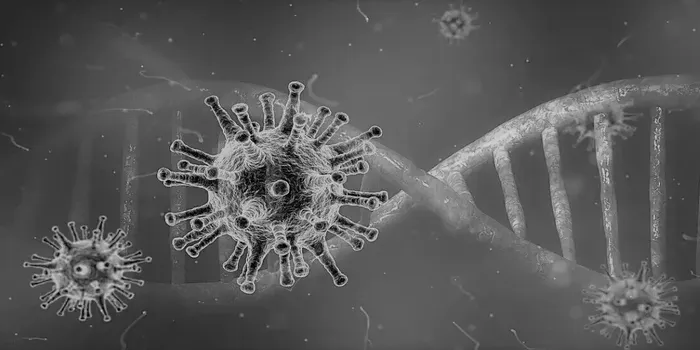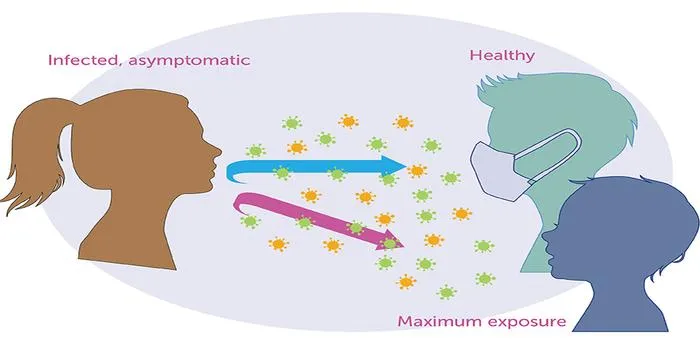- Home >
- Science
- > Exploration
Humans are 8% virus – How the ancient viral DNA in your genome plays a role in human disease and development
Ancient viral DNA comprises about 8% of the human genome, reflecting remnants from past viral infections. These viral sequences, known as endogenous retroviruses, have integrated into our DNA over millions of years. While often inactive, some of these sequences play crucial roles in human development and immune response. However, their activation can also be linked to various diseases, including cancer and autoimmune disorders. Understanding these viral elements helps reveal their dual role in both evolutionary processes and current human health challenges.

When you think about your genetic makeup, you might picture a complex blueprint of proteins and traits passed down from your ancestors. However, what many people don’t realize is that approximately ''8% of the human genome'' is derived from ancient viruses. This fascinating phenomenon is due to the integration of viral DNA into our genomes over millions of years, a process known as ''endogenous retroviral integration''. Understanding how these viral remnants impact human ''disease'' and ''development'' can shed light on our biological history and potential medical advancements.
The Role of Endogenous Retroviruses
Endogenous retroviruses (ERVs) are viral elements that have been incorporated into the DNA of our ancestors. Over time, these ''viral sequences'' have been passed down through generations, becoming a permanent part of our genetic code. While many of these sequences are now inactive, some have evolved to play essential roles in human biology.
For example, certain ERVs are involved in the ''immune response'', helping the body recognize and combat foreign pathogens. Others contribute to the development of the ''placenta'' in mammals, which is crucial for the survival of the fetus. This dual role of ERVs as both potential ''disease triggers'' and beneficial elements illustrates the complex relationship humans have with their viral heritage.
Impact on Human Disease
Despite their potential benefits, ancient viral DNA can also be implicated in various human diseases. For instance, some studies suggest that ''ERVs'' might be linked to autoimmune disorders, where the immune system mistakenly attacks the body’s own tissues. This connection may arise when the immune system misidentifies viral remnants as threats, leading to inflammation and tissue damage.
Moreover, there is growing evidence that certain ''cancers'' may be associated with ERV activity. In some cases, the expression of these viral genes can disrupt normal cellular functions, contributing to tumorigenesis. By understanding the mechanisms through which ERVs influence ''cancer development'', researchers hope to identify new therapeutic targets and improve treatment strategies.
Viral DNA and Genetic Diversity
The presence of viral DNA in our genome also contributes to ''genetic diversity''. This diversity is crucial for the adaptability of the human population, allowing us to respond to environmental changes and emerging diseases. The ''evolutionary pressure'' exerted by viruses has driven the selection of certain traits that enhance survival, further intertwining our fate with these ancient pathogens.
To illustrate this point, consider the following table that summarizes the potential impacts of ERVs on human health:
| Impact of ERVs | Positive Effects | Negative Effects |
|---|---|---|
| Immune Response | Enhances recognition of pathogens | May trigger autoimmune disorders |
| Development | Facilitates placenta formation | Abnormal expression linked to complications |
| Cancer | Potential for therapeutic targeting | Involved in tumorigenesis |
| Genetic Diversity | Promotes adaptability | Can introduce harmful mutations |
Research and Future Directions
As researchers continue to unravel the complexities of our genome, the study of endogenous retroviruses opens up exciting avenues for scientific exploration. ''Genomic technologies'' such as CRISPR-Cas9 are being utilized to precisely edit and understand the impact of ERVs on human health. By manipulating these viral elements, scientists hope to develop innovative treatments for diseases linked to ERV activity.
Furthermore, the evolving landscape of ''personalized medicine'' indicates a future where individuals may undergo genetic testing to assess their risks related to viral DNA. Understanding one’s unique genomic makeup, including the presence of ERVs, could lead to tailored prevention strategies and therapies, ultimately enhancing overall health outcomes.
Conclusion
In conclusion, while it may be surprising to learn that humans are composed of around 8% viral DNA, this ancient genetic material plays a significant role in both our biology and the diseases we encounter. As we continue to explore the implications of endogenous retroviruses, we gain valuable insights into our evolutionary history and potential medical breakthroughs. The intricate dance between ''viruses'' and humans is far from over, and the future of medical research will likely be shaped by our understanding of these fascinating remnants of our past.












